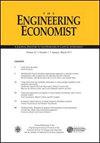A Three-phase Approach to an Enhanced Index-tracking Problem with Real-life Constraints
IF 1.2
4区 经济学
Q4 BUSINESS
引用次数: 4
Abstract
Abstract Enhanced index tracking is an emerging strategy for investing money in the stock market and is aimed at achieving outperformance over a given benchmark index while achieving a low tracking error. We consider the problem of rebalancing a portfolio for an enhanced index tracking strategy subject to various real-life constraints, including a lower bound and an upper bound on the expected tracking error. To solve this problem, we propose a three-phase approach consisting of preprocessing, optimization, and learning. In a computational experiment, we applied this approach to rebalance a given portfolio on a monthly basis over a time horizon of 10 years; the data for the S&P 500 benchmark index were provided by the investment company Principal Global Investors. Our approach generated portfolios that were provably close to optimality for all monthly rebalancing decisions. Over the entire horizon of 10 years, the portfolios devised by our approach yielded cumulative returns higher than the S&P 500 index after transaction costs with a moderate tracking error.具有现实约束的增强索引跟踪问题的三阶段方法
摘要增强指数跟踪是一种新兴的投资股市策略,旨在实现优于给定基准指数的表现,同时实现低跟踪误差。我们考虑了在各种现实约束条件下,为增强的指数跟踪策略重新平衡投资组合的问题,包括预期跟踪误差的下限和上限。为了解决这个问题,我们提出了一种由预处理、优化和学习组成的三阶段方法。在一个计算实验中,我们应用这种方法在10年的时间范围内每月重新平衡给定的投资组合;标准普尔500指数的数据由投资公司Principal Global Investors提供。我们的方法生成的投资组合在所有月度再平衡决策中都接近最优。在整个10年的时间里,我们的方法设计的投资组合在扣除交易成本后产生的累积回报高于标准普尔500指数,跟踪误差适中。
本文章由计算机程序翻译,如有差异,请以英文原文为准。
求助全文
约1分钟内获得全文
求助全文
来源期刊

Engineering Economist
ENGINEERING, INDUSTRIAL-OPERATIONS RESEARCH & MANAGEMENT SCIENCE
CiteScore
2.00
自引率
0.00%
发文量
14
审稿时长
>12 weeks
期刊介绍:
The Engineering Economist is a refereed journal published jointly by the Engineering Economy Division of the American Society of Engineering Education (ASEE) and the Institute of Industrial and Systems Engineers (IISE). The journal publishes articles, case studies, surveys, and book and software reviews that represent original research, current practice, and teaching involving problems of capital investment.
The journal seeks submissions in a number of areas, including, but not limited to: capital investment analysis, financial risk management, cost estimation and accounting, cost of capital, design economics, economic decision analysis, engineering economy education, research and development, and the analysis of public policy when it is relevant to the economic investment decisions made by engineers and technology managers.
 求助内容:
求助内容: 应助结果提醒方式:
应助结果提醒方式:


